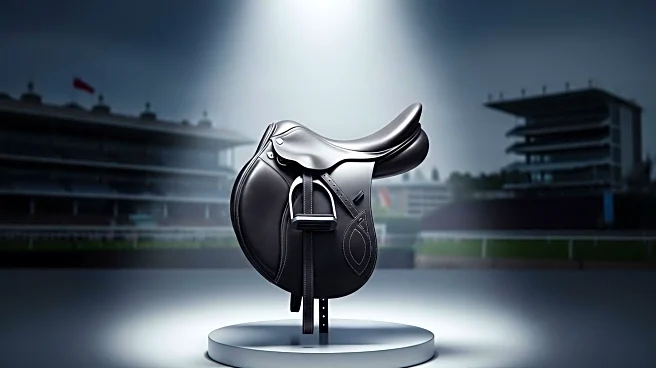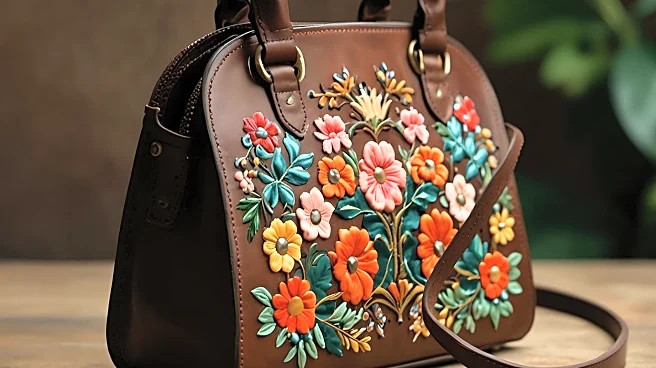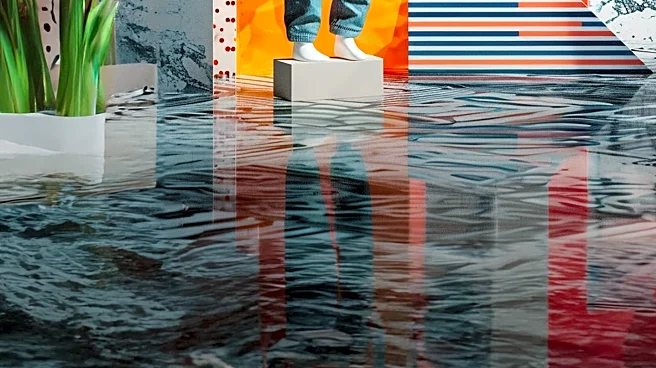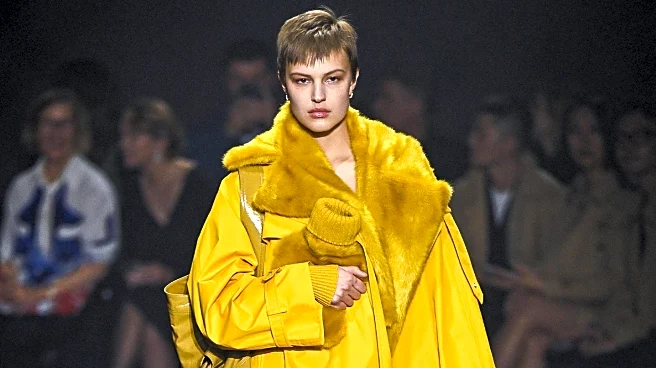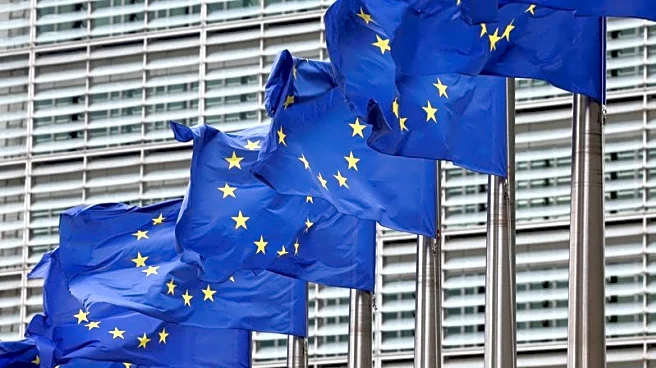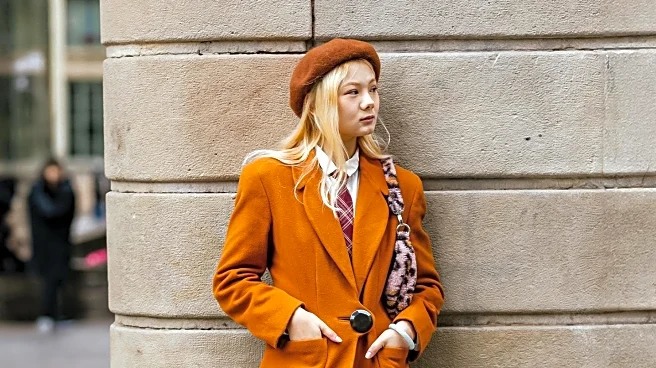What's Happening?
Paris Fashion Week Spring 2026 is showcasing a vibrant street style scene, emphasizing resort-core fashion trends. The event, set against the backdrop of Paris, features showgoers embracing tactile textures and expressive prints. This season, attendees are opting for bold patterns such as houndstooth, plaid, stripes, and argyle, paired with fabrics like corduroy, brocade, silk, and taffeta. The fashion week is characterized by personality-driven dressing, moving away from traditional minimalist luxury to more expressive styles. Key looks include striped knits, printed coats, and textured ensembles, reflecting a shift towards more daring and playful fashion choices.
Why It's Important?
The emphasis on resort-core fashion trends at Paris Fashion Week signals a broader shift in the fashion industry towards more relaxed and expressive styles. This trend could influence U.S. fashion markets, encouraging designers and retailers to incorporate more texture and print into their collections. The move away from minimalist luxury to personality-driven dressing may appeal to consumers seeking individuality and comfort in their clothing choices. This shift could impact fashion retail strategies, with potential increases in demand for bold patterns and textured fabrics, influencing production and marketing approaches.
What's Next?
As Paris Fashion Week continues, the showcased trends may inspire upcoming fashion collections and retail offerings in the U.S. Designers and brands might explore incorporating these resort-core elements into their spring and summer lines. Fashion retailers could adjust their inventory to meet anticipated consumer demand for textured and printed garments. Additionally, fashion influencers and media may amplify these trends, further driving consumer interest and shaping future fashion directions.
Beyond the Headlines
The resort-core trend highlights a cultural shift towards more expressive and individualized fashion choices, reflecting broader societal changes. This movement may encourage consumers to embrace fashion as a form of personal expression, challenging traditional norms and promoting diversity in style. The trend also raises ethical considerations regarding sustainable production practices, as the demand for diverse fabrics and prints could impact environmental and labor standards in the fashion industry.




